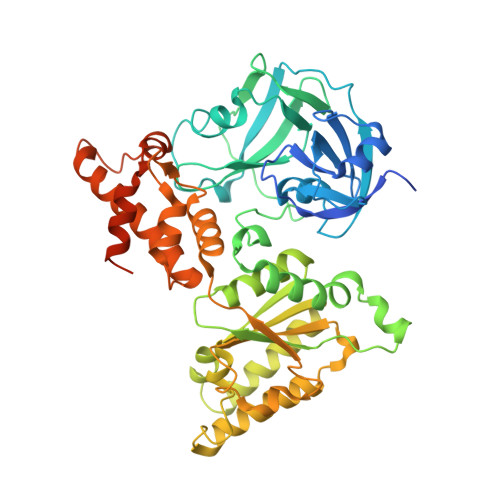Altered Intersubunit Communication Is the Molecular Basis for Functional Defects of Pathogenic p97 Mutants.
Tang, W.K., Xia, D.(2013) J Biol Chem 288: 36624-36635
- PubMed: 24196964
- DOI: https://doi.org/10.1074/jbc.M113.488924
- Primary Citation of Related Structures:
4KLN, 4KO8, 4KOD - PubMed Abstract:
The human AAA ATPase p97 is a molecular chaperone essential in cellular proteostasis. Single amino acid substitutions in p97 have been linked to a clinical multiple-disorder condition known as inclusion body myopathy associated with Paget's disease of the bone and frontotemporal dementia. How the mutations affect the molecular mechanism that governs the function of p97 remains unclear. Here, we show that within the hexameric ring of a mutant p97, D1 domains fail to regulate their respective nucleotide-binding states, as evidenced by the lower amount of prebound ADP, weaker ADP binding affinity, full occupancy of adenosine-5'-O-(3-thiotriphosphate) binding, and elevated overall ATPase activity, indicating a loss of communication among subunits. Defective communication between subunits is further illustrated by altered conformation in the side chain of residue Phe-360 that probes into the nucleotide-binding pocket from a neighboring subunit. Consequently, conformations of N domains in a hexameric ring of a mutant p97 become uncoordinated, thus impacting its ability to process substrate.
Organizational Affiliation:
From the Laboratory of Cell Biology, Center for Cancer Research, NCI, National Institutes of Health, Bethesda, Maryland 20892.















